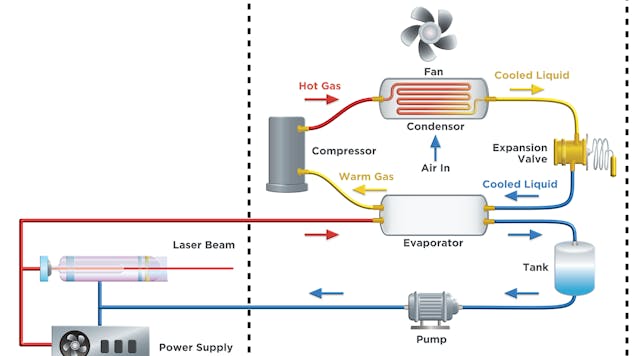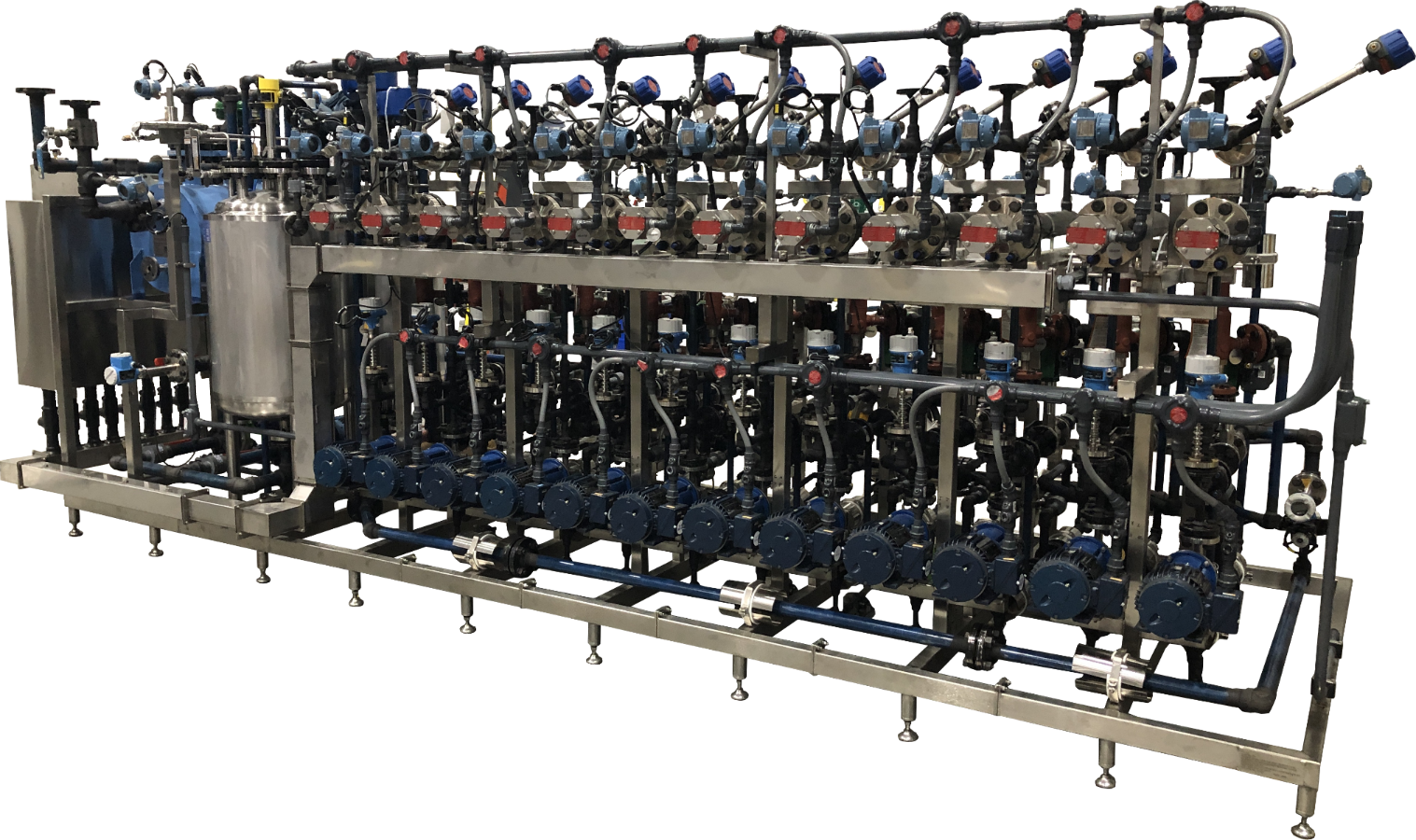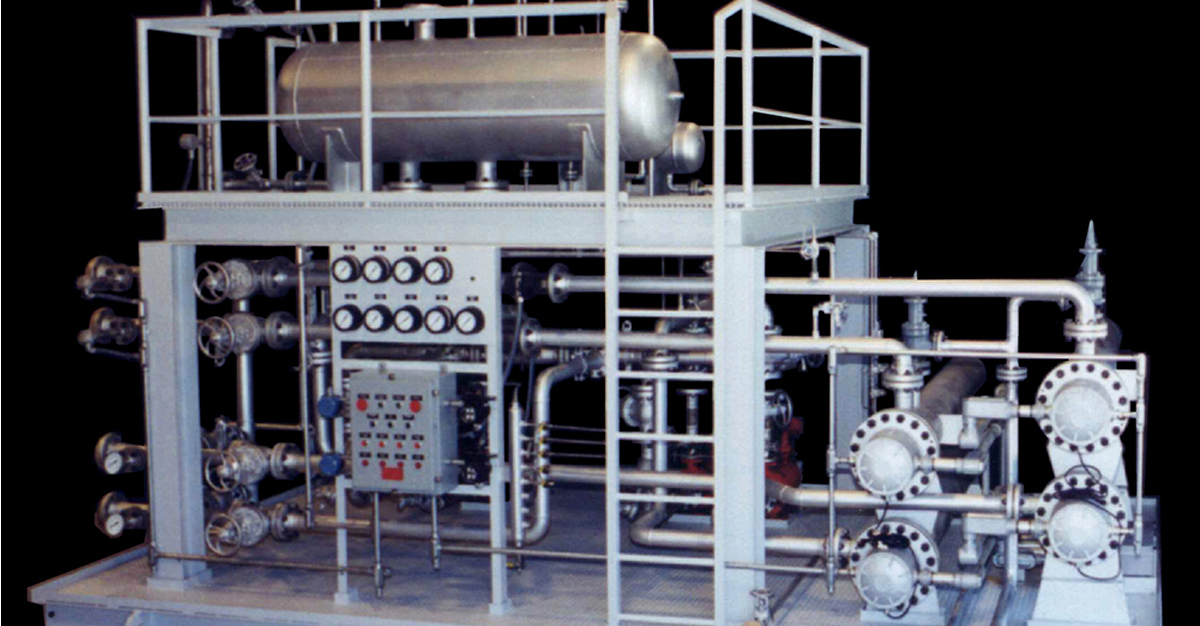The Duty of Heat Transfer Solutions in Sustainable Energy Solutions for the Future
Heat transfer systems are vital in the pursuit for sustainable energy options. They enhance thermal energy management, enhancing the performance of sustainable innovations. By employing devices like conduction, convection, and radiation, these systems decrease power losses. Their role in solar thermal and geothermal applications is specifically considerable. As developments emerge, the potential for further developments increases crucial concerns regarding future energy methods. What developments will form the landscape of sustainable energy?
Understanding Heat Transfer Solutions

The Importance of Thermal Power Management
Reliable thermal energy administration is necessary for making best use of energy efficiency and decreasing waste in different systems. By managing temperature level and optimizing Heat transfer procedures, organizations can noticeably decrease energy consumption and functional costs. Effective management includes the implementation of innovative technologies and methods that check and control thermal conditions within systems, ensuring that power resources are used successfully. Furthermore, correct thermal energy administration adds to reducing greenhouse gas exhausts, lining up with international sustainability objectives. It also boosts system integrity and efficiency, leading to boosted item quality and longer equipment lifespan. Inevitably, focusing on thermal power management is a crucial action in the direction of producing a lot more lasting power solutions and promoting an accountable technique to power consumption in domestic and commercial contexts.
Applications of Heat Transfer in Renewable Energy
While numerous renewable resource resources guarantee sustainability, the reliable application of Heat transfer plays an essential role in their efficiency. In wind energy systems, Heat transfer is made use of for generator part cooling, enhancing efficiency and durability. Geothermal energy counts on reliable Heat exchange between the earth's subsurface and the liquid distributing in the system, maximizing power extraction. Biomass power processes also gain from Heat transfer, as it assists in transforming organic products into usable gas via pyrolysis and gasification. Furthermore, in hydropower, preserving optimal temperatures in storage tanks can enhance energy result. Each of these applications demonstrates the vital importance of Heat transfer systems in improving renewable resource innovations, ultimately adding to a much more lasting power future.
Enhancing Solar Thermal Power Effectiveness
As solar thermal power systems continue to progress, enhancing their effectiveness has actually ended up being vital for taking full advantage of energy output. Developments in Heat transfer technologies, such as improved thermal storage space materials and innovative Heat exchangers, play a substantial function in boosting performance. By making use of advanced materials that have premium thermal conductivity, systems can catch and transfer Heat better. Furthermore, integrating monitoring systems that adhere to the sun's path assurances that collectors receive suitable solar direct exposure throughout the day. Utilizing nanotechnology in solar absorbers can additionally raise energy absorption prices. Furthermore, incorporating automatic control systems aids manage temperature levels and handle energy distribution efficiently, leading to minimized losses and enhanced overall system effectiveness. These improvements lead the means for even more lasting solar thermal energy services in the future.
Geothermal Heating: A Sustainable Solution
Geothermal home heating offers a sensible alternative for lasting power, supplying considerable environmental benefits with reduced greenhouse gas exhausts. Its effectiveness and cost-effectiveness make it an attractive choice to conventional heater. Challenges connected to implementation must be resolved to maximize its possible effect.
Ecological Advantages of Geothermal
Although standard heating techniques contribute substantially to greenhouse gas emissions, geothermal heating offers a compelling choice that minimizes ecological effect. By taking advantage of the Planet's internal Heat, geothermal systems utilize a renewable power resource, substantially decreasing dependence on nonrenewable fuel sources. This method produces marginal carbon emissions, making it a cleaner option for commercial and household heating. Additionally, geothermal systems advertise energy effectiveness, as they call for much less power compared to conventional heating unit. DVS Heat Transfer Systems. The use of geothermal power additionally helps in minimizing air contamination, boosting neighborhood air quality and public wellness. As a sustainable solution, geothermal heating supports environment change mitigation initiatives, placing itself as an important part in the change in the direction of a greener future
Performance and Cost-Effectiveness
Just how does geothermal home heating determine up in regards to effectiveness and cost-effectiveness compared to conventional heater? Geothermal heating shows premium performance, frequently accomplishing a coefficient of performance (COP) of 3 to 5, meaning it produces 3 to 5 systems of Heat for each device of power eaten. This effectiveness equates right into lower operating expense, specifically in areas with secure geothermal sources. Preliminary setup costs can click this site be greater than traditional systems; nevertheless, long-lasting savings on power expenses and lowered maintenance costs can balance out these upfront financial investments. Furthermore, numerous governments incentivize geothermal systems through discounts and tax obligation credit scores, enhancing their cost-effectiveness. On the whole, geothermal home heating emerges as a lasting and financially feasible choice to more standard heating services.
Implementation Difficulties and Solutions
Various obstacles can hinder the widespread application of geothermal heating unit, in spite of their clear benefits as a sustainable energy option. High first installment expenses usually deter investors and home owners, making financing a considerable obstacle. Additionally, the geographical constraints of suitable geothermal websites limit accessibility in specific areas. Local guidelines and permitting processes can also make complex project development, causing delays. Public awareness and understanding of geothermal systems remain reduced, impeding approval. To address these difficulties, targeted education projects can boost public knowledge, while government incentives could minimize click to investigate economic burdens. Collaborating with regional authorities to improve guidelines might promote smoother task authorizations, inevitably advertising the fostering of geothermal home heating as a viable, sustainable power choice.
Advancements in Heat Transfer Technologies
Advancements in Heat transfer innovations play an important duty in boosting power effectiveness and sustainability. Advanced Heat exchangers and phase change products go to the center of these growths, supplying considerable enhancements in thermal monitoring. These modern technologies not just enhance power use however likewise contribute to reducing ecological effect in numerous applications.
Advanced Heat Exchangers
Advanced Heat exchangers play a necessary role in boosting power efficiency across numerous applications in sustainable power options. These devices help with the transfer of Heat in between two or more liquids, noticeably minimizing energy consumption in processes such as commercial home heating, air conditioning, and power generation. Advancements in materials and layout, such as making use of nanofluids and compact setups, have actually caused boosted thermal efficiency and reduced dimension requirements. In addition, developments in electronic monitoring and control systems permit optimized operation, further enhancing performance. By minimizing waste Heat and optimizing energy healing, progressed Heat exchangers add to lower carbon impacts and support the shift towards environmentally pleasant technologies. Their proceeded growth is vital for accomplishing international power sustainability objectives.
Phase Change Products
The assimilation of phase modification products (PCMs) right into Heat transfer modern technologies stands for a considerable improvement in browse around here energy administration and performance. PCMs take in and launch thermal energy throughout their stage adjustments, enabling efficient temperature law in structure materials and power systems. By saving excess Heat throughout optimal periods and launching it when demand boosts, PCMs add to fill shifting and energy conservation - DVS Heat Transfer Systems. This capability enhances the efficiency of eco-friendly energy systems, particularly in solar thermal applications. Furthermore, PCMs can boost the thermal convenience of interior settings, minimizing reliance on standard heating and cooling approaches. As innovations in PCM solutions remain to arise, their function in lasting power remedies is positioned to expand, using appealing opportunities for future research and application

Future Potential Customers for Heat Transfer in Lasting Power
As the demand for lasting power services remains to climb, the duty of Heat transfer systems is coming to be increasingly essential fit future innovations. Technologies in styles and products are anticipated to enhance efficiency in Heat transfer, lowering power losses in numerous applications. The integration of advanced thermal storage systems, such as stage change materials and thermochemical storage space, will certainly enable better administration of energy sources. Study into nanofluids and biomimetic Heat exchangers might better maximize thermal performance. The adoption of wise innovations will allow for real-time tracking and adaptive control of Heat transfer processes. These innovations are poised to considerably contribute to the overall effectiveness and sustainability of power systems, paving the means for a much more energy-efficient future.
Often Asked Inquiries
Just How Can People Execute Heat Transfer Equipment in your home?

People can apply Heat transfer systems in the house by installing energy-efficient devices, using radiant heat, and maximizing insulation. These measures enhance energy performance, lower expenses, and promote lasting methods in residential atmospheres.

What Are the Prices Related To Installing Heat Transfer Systems?
The costs connected with setting up Heat transfer systems vary commonly, generally including devices, setup labor, and upkeep. Factors such as system type, home size, and regional guidelines considerably affect the general expenditure involved.
Are There Federal Government Incentives for Heat Transfer System Installations?
Government incentives for Heat transfer system installations differ by region and can consist of tax obligation debts, discounts, and gives. These economic benefits intend to motivate adoption, ultimately advertising energy effectiveness and minimizing environmental influence within neighborhoods.
Exactly How Do Heat Transfer Equipments Impact Power Expenses?
Heat transfer systems significantly affect energy bills by enhancing power efficiency. By boosting the transfer of Heat, these systems minimize energy usage, causing lower energy costs and producing an extra sustainable strategy to power administration.
What Maintenance Is Needed for Heat Transfer Solutions?
Maintenance for Heat transfer systems includes normal inspections, cleaning of components, checking liquid levels, making certain appropriate insulation, and replacing worn components. These jobs help preserve effectiveness, stop break downs, and prolong the system's functional life-span.
These systems assist in the activity of thermal energy from one medium to one more, making it possible for the transfer of Heat for cooling, heating, or power generation purposes. Geothermal power relies on efficient Heat exchange between the earth's subsurface and the fluid distributing in the system, taking full advantage of power removal. In addition, geothermal systems advertise power efficiency, as they require much less energy compared to traditional home heating systems. Advanced Heat exchangers play a vital duty in boosting power performance across various applications in sustainable energy solutions. Heat transfer systems notably influence power costs by maximizing power performance.